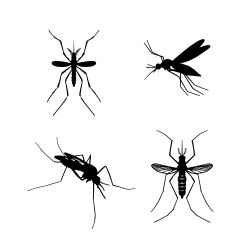
Gene drives are the hottest new technology in molecular biology. If you need a refresher, we wrote a description last week of what a gene drive is and how it works.
And, although gene drives are opening up boundless possibilities in the world of genetic manipulation, real concerns lie in the unknown consequences of using them. And, that is why gene drives are making people so nervous.
Although one can imagine countless different ways that gene drives could be used, the top reasons that are at the forefront of this technology moving from the bench into our world are:
1. Invasive species could be eradicated. Invasive species can take over an area, killing native species and causing a lot of trouble. One such case is the mouse problem in certain islands in the Pacific. In fact, it is in Hawaii that one of the first pilot projects for genetically altered mice is being discussed.
Just ask Peter Pyle, a biologist who lived at a research station on Southeast Farallon Island off the coast of San Francisco, CA. He says, in an article in Bay Nature magazine (1), that
“At night they would be everywhere. I had them crawling on top of me at night and in my hair. I tried to mouse-proof the house but we’d catch 50 mice in the night.”
And, if not mice in the Pacific, there are plenty of other invasions going on - such as Asian carp in the Mississippi River, starlings that roost in hordes of one million, and invasive or not, what about the millions of rats that reside in New York City?
2. While rodents in your living space may be a huge annoyance, there is another level to this type of genetic promise. Gene drives have the potential to alter wild populations of organisms for beneficial purposes, such as altering insects so that vector borne infectious diseases such as malaria, dengue, yellow fever, Lyme disease, etc. are no longer transmitted. This could happen by either modifying the insect or decreasing the population numbers so that it can no longer transmit the disease. In 2015, there were an estimated 214 million cases of malaria occurred worldwide and 438,000 people died, mostly children in the African Region (2.) Gene drive technology is the possibility of a future without that tragedy.
Gene drives are so powerful that the National Academy of Science released a report in June of this year weighing in on different controversies surrounding this technology. In it, they state that a "phased approach to testing, engagement of stakeholders and publics, and clarified regulatory over-sight can facilitate a precautionary, step-by-step approach to research on gene drives without hindering the development of new knowledge."
Scientists are thinking about the repercussions, as well. Some of the leaders in the gene drive field published a list of safeguard measures in July of 2015, stating that "their capacity to alter wild populations outside the laboratory demands caution."
Some of the suggested strategies are,
- perform experiments outside the habitable range of the organism
- such as using Anopheles mosquitoes in the northern region of the US
- perform experiments in areas without potential wild mates
- use a laboratory strain that cannot reproduce with wild organisms
- certain strains of Drosophila (fruit flies) cannot mate with wild flies - only with each other
- put in physical barriers to ensure that the organisms are not released into the environment
- Triply nested areas (need to open and close > three doors)
- Keep careful records of all organisms
- Low temperature room (slows flies down)
- Air blast fans
However, environmental groups are not convinced that gene drives are the way to go. The group the "Friends of the Earth" have been vocal critics, releasing an open letter - "A Call for Conservation with a Conscience: No Place for Gene Drives in Conservation."
One of their critiques of gene drives is, as quoted by Dr. Vandana Shiva "This technology would give biotech developers an unprecedented ability to directly intervene in evolution, to dramatically modify ecosystems, or even crash a targeted species to extinction."
But some people, such as Bill and Melinda Gates, are committed to seeing this technology come to life. The Bill and Melinda Gates Foundation has invested $75 million to the project Target Malaria based at the Imperial College, London - the largest amount of money ever spent on gene-drive technology.
And, if you are not sure where you stand, there is a lot more to come about gene drives in the future. But, for the moment I would recommend spending less time listening to people like Dr. Vandana Shiva who, it seems, stands in the way of any scientific progress and promotes "seed freedom" over even well understood and accepted innovations such as golden rice. Rather, I would put my trust in people like Bill Gates who created and built Microsoft into a company that changed the world, has spent the last decade giving (A LOT) of his money away to help the poor and whose motto is "It's fine to celebrate success but it is more important to heed the lessons of failure."
Using gene drives will inherently be a leap of faith, of sorts, no matter what - simply because they are new. And, although scientists may be ready to release mosquitoes into the environment to stop malaria, there will have to be conversation and education to ensure that the public is involved. Gene drives are pushing the envelope on bringing biotechnology into our homes and, because of that, we have to make sure that it is done thoughtfully. We will make sure that we keep talking about it here, at ACSH, to close the gap between the lab bench and your living room.
If you are interested in more information about gene drives, there is a good TED talk on the topic: http://www.ted.com/talks/jennifer_kahn_gene_editing_can_now_change_an_en...
References:
(1) http://baynature.org/article/re-coding-conservation/
(2) cdc.gov
